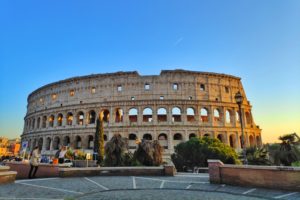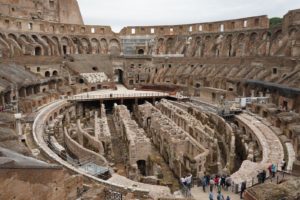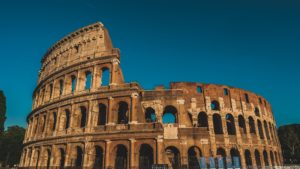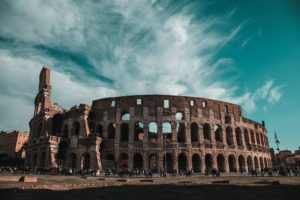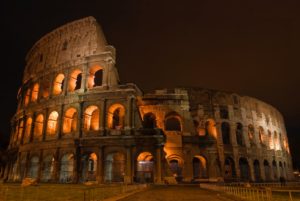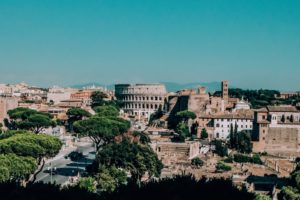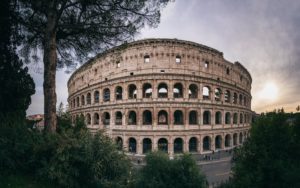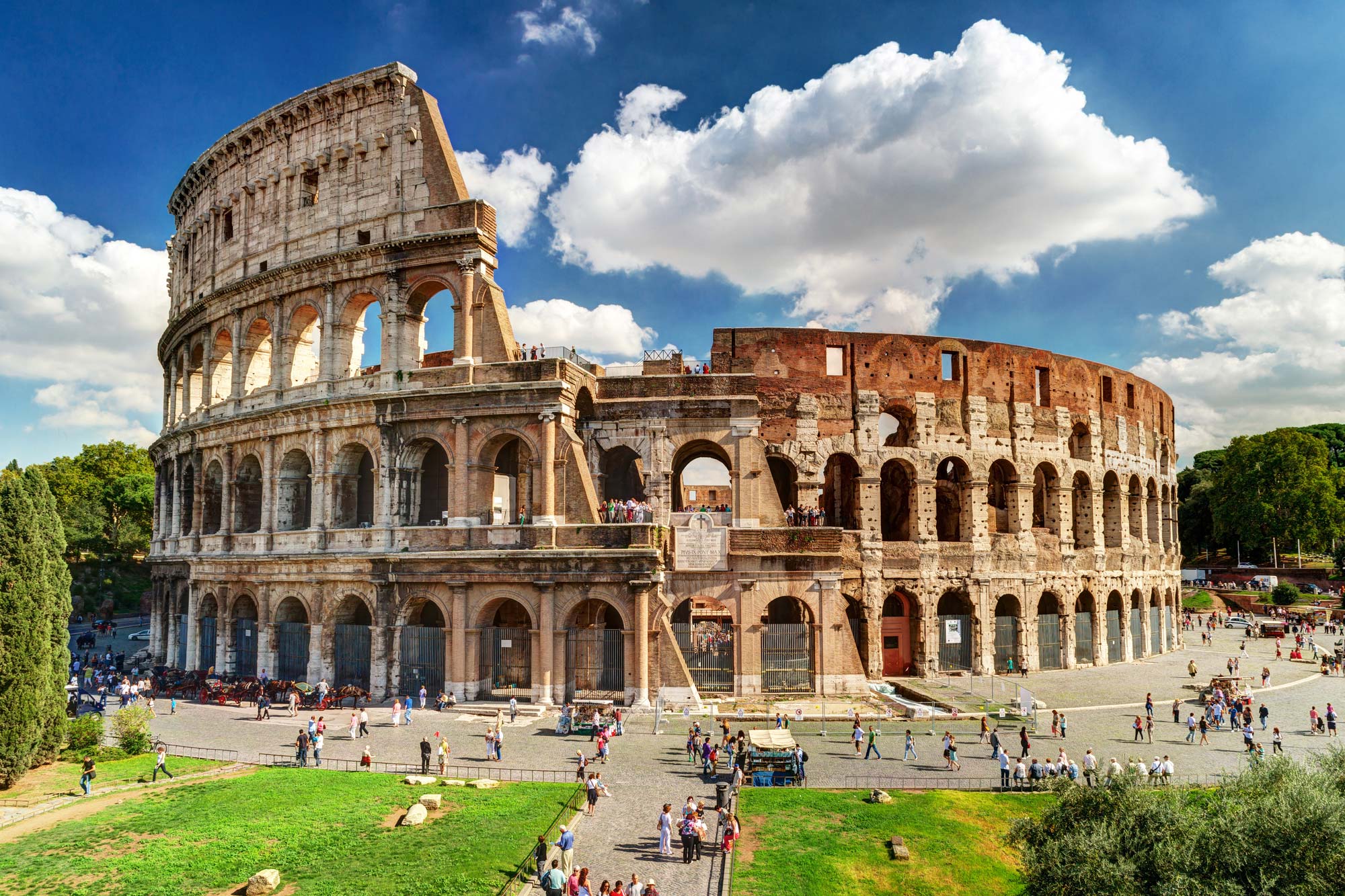
Colosseum Tours in Rome
Official Colosseum Tours in Rome
Colosseum tours in Rome provides a full range of experiences, for visiting the iconic Roman monument and Italy’s most celebrated ancient arena.The Colosseum, known as the Flavian Amphitheater, welcomes 5 million annual tourists, therefore pre-planning to this monumental landmark is essential.
Whether you’re looking to book the best Colosseum tours, purchase skip-the-line Colosseum tickets for a hassle-free experience, or seek advice on how to tour the Colosseum yourself, you have come to the right place.
Looking for the best places to eat in Rome and throughout Italy ? Cooking Italy offers award winning food tours, cooking classes and wine tasting experiences.
RECOMMENDED COLOSSEUM TOURS
Express Colosseum Tour
Step into the past of the Roman Empire with a 1-hour skip-the-line Colosseum Tour . Trace the path of emperors as you uncover the grandeur of the Flavian Amphitheatre’s 1st and 2nd tiers. BOOK EXPRESS COLOSSEUM TOUR Express Colosseum Tour Highlights Colosseum express tour…
Colosseum Arena Floor & Ancient Rome Tour
Enter an exclusive section of the Colosseum and witness a partially reconstructed portion of the arena floor. Gain entry through the Gladiator’s Gate, providing a unique perspective on the amphitheater. Enjoy perks that regular ticket holders don’t get with skip-the-line access and three areas…
Colosseum Underground Tour with Roman Forum and Palatine Hill
Experience the Colosseum like never before, with an exclusive VIP tour that takes you deep into its underground secrets. This Colosseum underground tour provides privileged access, to sections of the Colosseum not available with a standard ticket, including the Colosseum Underground tunnels, Gladiator’s Arena…
Continue Reading Colosseum Underground Tour with Roman Forum and Palatine Hill
Privileged Entrance Colosseum Tour with Palatine Hill & Roman Forum
Skip the Colosseum line at the Colosseum, with Roman Forum & Palatine Hill 3.00h · Rome, Italy Visit the Colosseum, the Palatine Hill and Roman Forum during this 3 hour guided tour. Your local…
Continue Reading Privileged Entrance Colosseum Tour with Palatine Hill & Roman Forum
Private Colosseum Tour
For the ultimate Colosseum experience, join us on an exclusive 3 hour private Colosseum tour, including the Palentine hill and Roman Forum. With reserved skip the line tickets, you will bypass the…
Evening Colosseum Tour
Reveal the secrets of Rome’s ancient past during an evening exploration of the Colosseum. Witness the gladiator’s arena at sunset, followed by a visit to the Imperial Forum and a glimpse of…
Colosseum Visiting Tips
Visiting the Colosseum is essential for any trip to Rome. Each year, over seven million visitors embark on a journey to explore this ancient structure, making it crucial to adequately prepare for your visit to the Colosseum. Below are useful Colosseum visiting tips to maximise your Colosseum experience. COLOSSEUM VISITING TIPS Colosseum Opening Hours The…
Colosseum FAQ’s
Colosseum Facts What is the Colosseum? The Colosseum is an ancient amphitheater situated in the heart of Rome. When was the Colosseum constructed? The construction of the Colosseum was initiated in 72 AD, and it reached completion in 80 AD. What was the purpose behind building the Colosseum? The Colosseum was erected to serve as…
Colosseum Tickets
COLOSSEUM TICKETS Can I buy Colosseum tickets at the door? It is usually possible to purchase Colosseum tickets at the door. The Colosseum capacity is 3000 people and during peak season, tickets do run out. There is long often waiting at the Colosseum ticket office. Other locations to buy tickets for the Colosseum include nearby…
WHY BOOK COLOSSEUM TOURS IN ROME
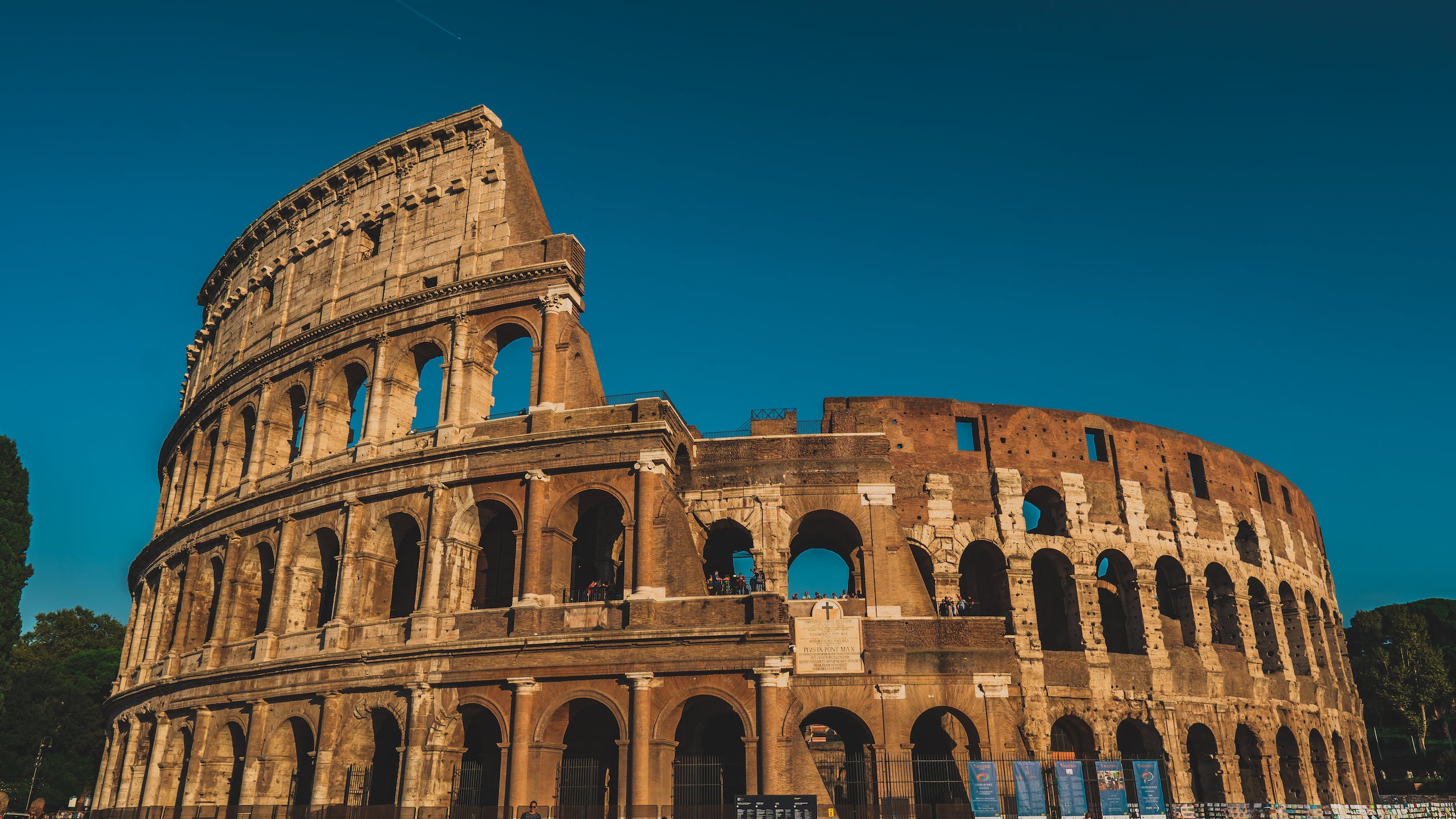
- COLOSSEUM TOURS IN ROME EMPLOYEES ONLY THE BEST ROMAN LICENSED TOUR GUIDES
- ALL ROME COLOSSEUM TOURS INCLUDE SKIP THE LINE TICKETS
- 24-HOUR CANCELLATION POLICY
- ROMAN COLOSSEUM TOURS AVAILABLE IN VARIOUS LANGUAGES
- ALL PAYMENT METHODS AVAILABLE WITH INSTANT CONFIRMATION
- 24/7 CUSTOMER SERVICE – OUR TEAM OF ROME EXPERTS ARE HAPPY TO HELP
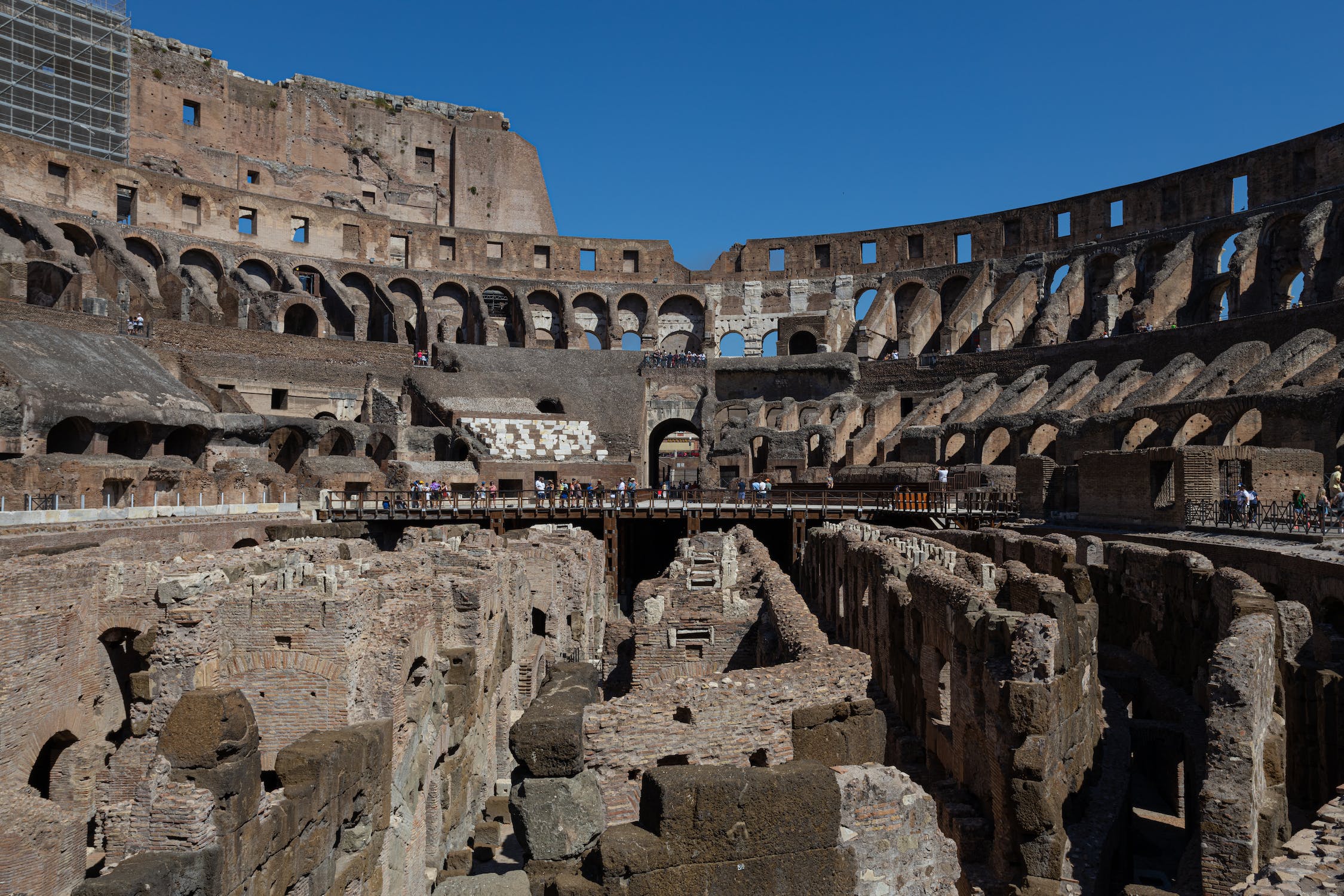
ROME COLOSSEUM TOURS – FAQ
Is it worth doing a guided tour of Colosseum?
Colosseum tours are worth it if you have a good tour guide. Tours will enhance your Colosseum experience, providing historical information on the iconic arena and a journey back to ancient Rome. A Colosseum tour will also save you time with skip the line tickets which avoids the crowds entering the amphitheater.
Which are the best Colosseum Tours?
There are various Colosseum guided tours options to visit the Colosseum, Roman Forum & Palatine Hill for all types of travelers and budgets.
Gladiator entrance colosseum arena floor tours
Colosseum underground and dungeons tours
How long do Colosseum tours take?
Guided Colosseum tours usually take between 1 to 3 hours. This includes a Colosseum visit as well as the Roman Forum and Palatine Hill. Its recommended to explore the archeological areas after the tour end.
How much is a Colosseum tour?
Colosseum walking tours vary in price depending on the type of tour you join. More exclusive tours of the Colosseum visit the underground or arena floor cost more. Private Colosseum tours are the most expensive option.
Can you tour the Colosseum in Rome on your own?
Touring the Colosseum alone is an option for those wishing to explore the arena without a guide. Audio guides are available for purchase inside the Colosseum. See Colosseum visiting tips.
What is the best Colosseum tour?
The most complete and in demand tour of the Colosseum is the underground tour. The colosseum dungeon tours provide access to the all areas of the amphitheater, including the Colosseum Arena Floor, the underground tunnels and the top levels. Colosseum evening tours are also a favorite choice to avoid the crowds and heat. See the best Colosseum tours available to decide which is best for you
Is it recommeded to buy Colosseum tickets online or on-site?
We suggest you book Colosseum tickets online to avoid long lines and ensure entry, especially during peak tourist seasons.
How do I book tickets to the Colosseum?
All tours of the Colosseum include tickets to enter the Colosseum. Alternatively buy your colosseum ticket without a tour.
Which are the top attractions to see near the Colosseum?
- Vatican Museum
- Trevi Fountain
- Pantheon
- Borghese Gallery
- Spanish Steps
- St. Peters Basilica
- Catacombs of Rome

Enhance your Colosseum experience and explore the ancient amphitheatre, Roman Forum and Palatine Hill with an audio guide.
audio guide instead of a colosseum guided tour?
Purchase a Colosseum audio guide
Where is the colosseum?
Meeting Point – Piazza del Colosseo, Roma
Audioguide available in English, Italian, French, German, Spanish, Portuguese, Chinese, Japanese, Korean, Arabic, Latin, Russian & Polish
Colosseum ticket with audioguide Cost – € 23.50
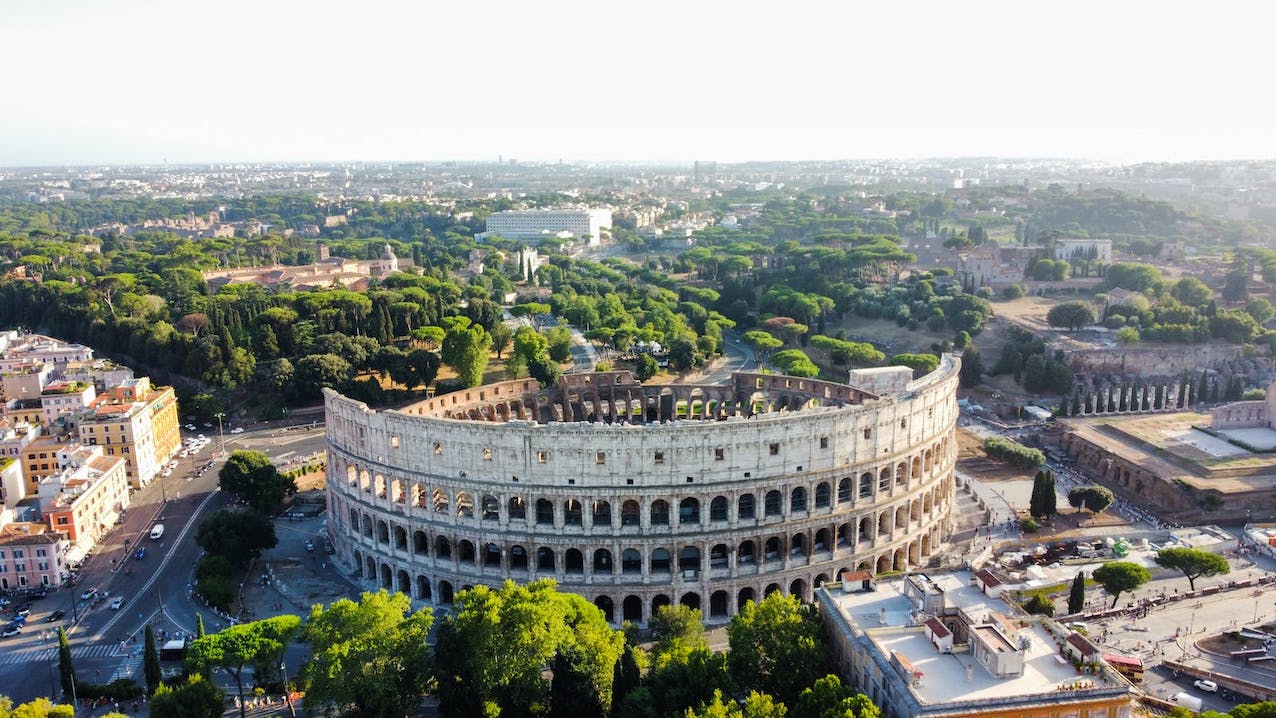
Colosseum Tickets
Visit the Colosseum without the crowds
Purchase skip the line Colosseum tickets from the Colosseum official Website
- Ticket valid 24 hours from first use
- 1 entrance to the Colosseum at the booked time
- 1 open entrance to the Roman Forum, Palatine and Imperial Forum
Colossseum ticket cost €19
Colosseum Tours in Rome Recommended By


